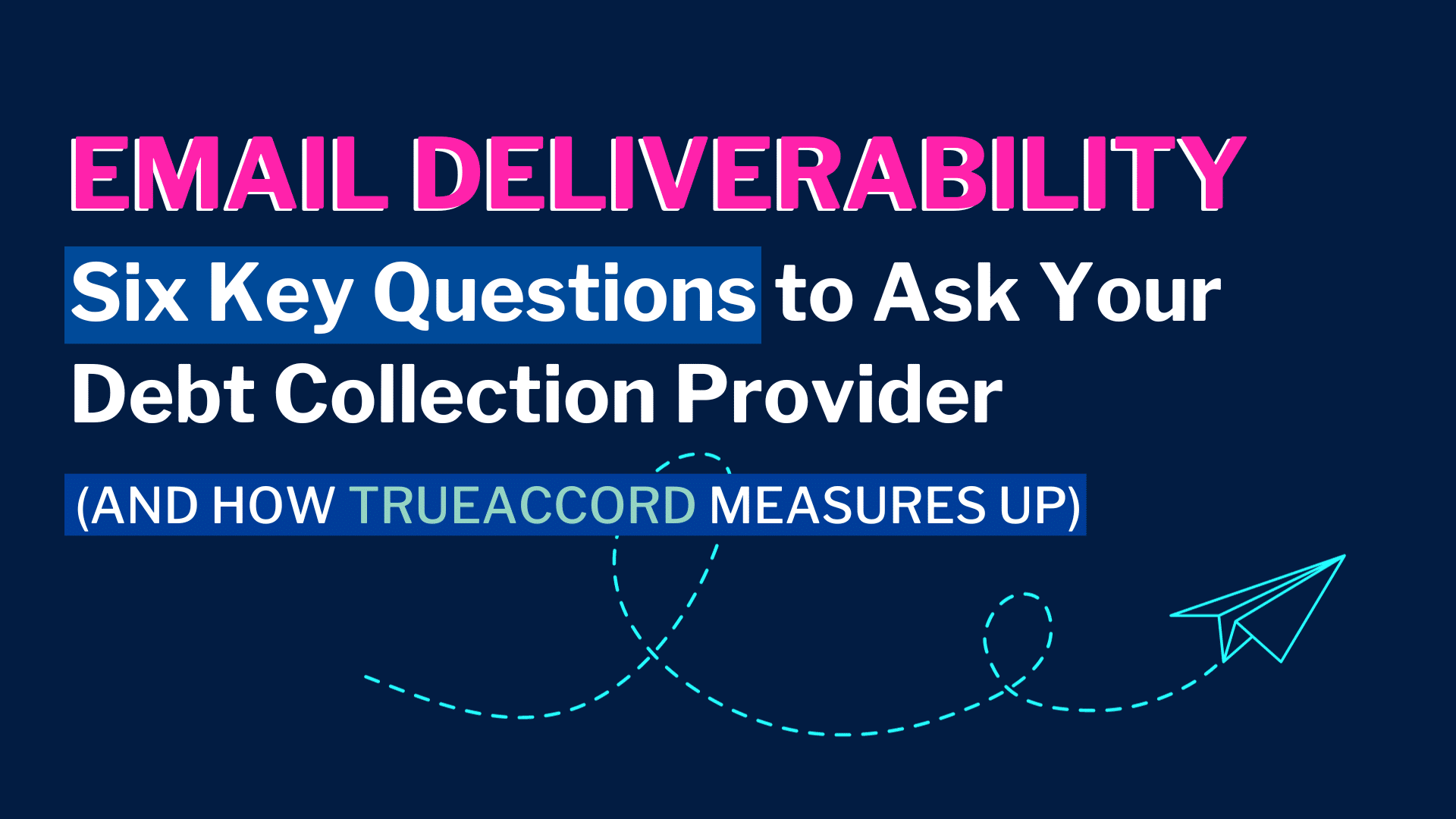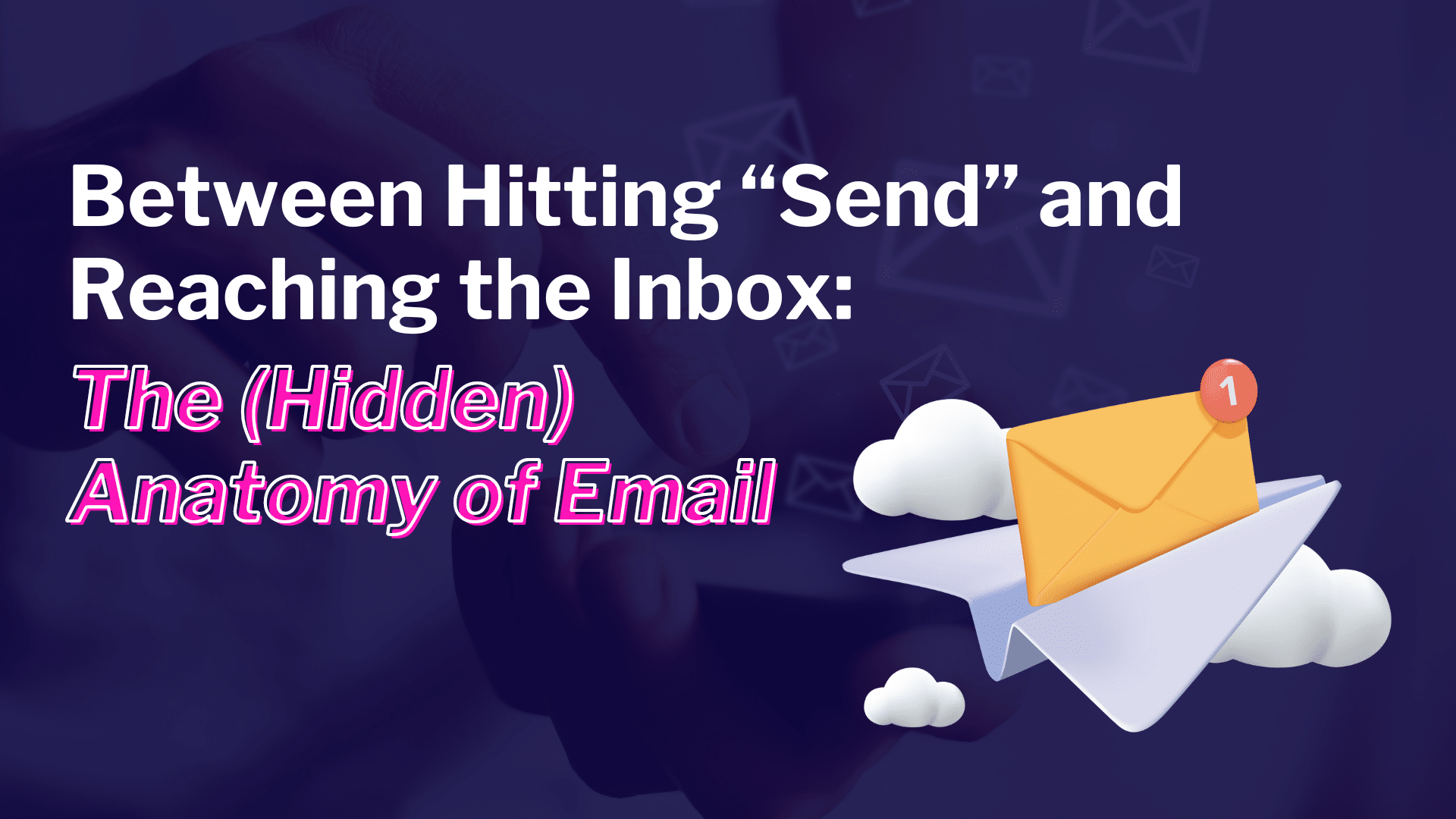
Did you know one of the most common reasons for missing a payment is because delinquent customers simply forget to pay their bill?
But staying top of mind for consumers is harder than ever using traditional call-and-collect methods considering stricter compliance regulations and the fact that 94% of unidentified calls go unanswered. Plus, surveys have found that when it comes to debt collection, 40% of consumers state email as their first preference of communication, and contacting through a customer’s preferred channel first can lead to a more than 10% increase in payments.
But, even if your collections partner claims to use digital engagement, are you actually getting better recovery rates?
Simply adding email into the communication mix isn’t enough—there’s a lot that goes on between hitting “send” and reaching the inbox. Understanding the core components of a successful email program is helpful, but are your collection emails actually making it to your delinquent accounts? Unopened emails or messages trapped in spam won’t help those liquidation rates.
In today’s digital world, businesses can’t afford to work with collection partners who claim to engage consumers via email but can’t back it up with the metrics to prove that their messages actually reach their intended recipients.
Let’s look at six key questions to ask your collections partners, why each question is important, and how TrueAccord measures up. Want to learn more about email deliverability? Click here»»
1) What is their primary method of consumer engagement in debt collection?
Why It Matters
The success of traditional call-and-collect methods are waning compared to modern digital engagement due to more consumers preferring digital communications, declining right-party contact rates, and increasing compliance restrictions.
How TrueAccord Measures Up
TrueAccord is a digital first, omnichannel debt collection agency—and has been a leader in digital consumer engagement.
2) How long have they used email as a form of consumer engagement in debt collection?
Why It Matters
Many debt collection providers have been slow to adopt digital communication as part of their consumer outreach, and even those who have integrated digital are still refining strategies for optimal outcomes.
How TrueAccord Measures Up
From the very start back in 2013, TrueAccord’s approach to consumer engagement has been digital-first and continues to grow into a robust omnichannel operation through machine learning driven by data from 20 million customer engagements and counting.
3) What is their email delivery rate?
Why It Matters
Email Delivery Rate refers to the successful transmission of an email from the sender to the recipient’s mail server, measured by emails delivered divided by the number of emails sent.
How TrueAccord Measures Up
TrueAccord has a 99% email delivery rate, compared to the average email delivery rate of approximately 90%.
4) What is their deliverability rate?
Why It Matters
Successful email delivery doesn’t mean that it actually makes it into the recipient’s inbox. Deliverability divides how many emails reach the recipient’s inbox, as opposed to their spam folder, by the total number of emails sent.
How TrueAccord Measures Up
TrueAccord has a 95% deliverability rate, compared to the worldwide average of 84.8%
5) Do they measure open rates and/or click rates?
Why It Matters
Measuring open rates (percentage of recipients who opened your email) and click-through rates (percentage of those who clicked on a link in the email) play a dominant role to understand which communications are resonating with recipients and which are not.
How TrueAccord Measures Up
TrueAccord has a total open rate 52% and total click rate 1.77%, compared to the 2023 average industry total open rate of 27.76% and click rate of 1.3%.
6) How do they make adjustments when delivery and/or deliverability rates fluctuate?
Why It Matters
Email delivery and deliverability rates will fluctuate, but how a provider responds and adjusts to these changes is crucial to keeping the rates as high as possible.
How TrueAccord Measures Up
TrueAccord’s dedicated Email Operations and Deliverability Team proactively monitor and make adjustments, along with using our patented machine learning engine, HeartBeat.
Ready to Reach Optimal Consumer Engagement in Your Debt Collection Operations?
Start by scheduling a consultation to learn more about what influences email delivery and deliverability rates and how TrueAccord consistently performs above the rest.
